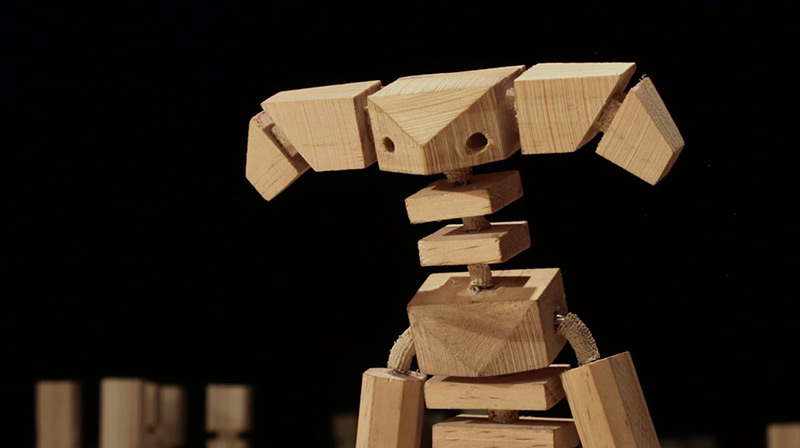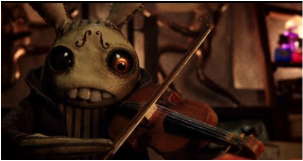Design tools and strategies for materials based animation
Puppetmaking Workshop Lecture notes and extra resources and information.
|
This Planning resource has been designed to help you to make the connections between practical constraints, conceptual aspirations and the visual currency of specific approaches and materials in stop motion and under camera production.
It is most useful when planning in Pre-production for a long term production film on a module containing a formal "Pitch" session. It is designed to present commonly tools and strategies specific to the student who will be using fabricated objects and stylised surfaces in a narrative sequence. A lecture and short practical exercise has been designed to help students to think like an art director when designing their film. The aim is to encourage students to consider the potential of stylising character, and exploiting specific material qualities to help to enhance the story and appeal to the intended audience. |
The visual presentation of ideas - How to communicate real world concerns. |
In early pre-production, a clear approach to the pre-visualisation of key aspects of the film is vital. Design for functionality is an obvious early concern in the making of any animated sequence. In stop motion in particular it is critical that the puppet maker uses strategies which reduce the margin for error in making puppets, props and sets. The stop motion director will need to call on a wide range of technical expertise in a broad range of fields, such as mould-makers, carpenters, metal workers, pattern cutting and sewing experts etc. He or she will need to present fabrication tasks in a clear and professional manner to a wide range of people at all stages of the project. It is also critical that the information presented illustrates key aesthetic approaches and conceptual decisions and leaves any consultant maker in no doubt as to the overall look and feel of the piece.
The following words could be employed in various combinations to describe the visual look of a stop motion narrative. The combination chosen will depend on a number of key concerns
1) The intended Audience and destination of the final film.
2) The Message/Narrative being communicated
3) The skill, limitations and personal aesthetic of the Maker/director
4) The overall budget and range of tools, equipment and materials available.
If we take one visual element as a case study - (in this case colour palette) the stop motion designer and fabricator needs to consider this in the context of the list above to identify practical considerations, and the list below, to identify and prioritise conceptual and aesthetic considerations.
Colour - Saturation - Hue - Tint - Shade - Wash - Blush - value - Tone - Pastel - inks - paints - air brushed -
Surface - Texture - Rendered - Matt - Gloss - Washed - Sponged - Sanded back - Distressed -
Light - Diffused - Hard - soft - Staged - Ambient - indoor - outdoor - Warm - cool - High Contrast -
Materials - Soft - Translucent - reflective - Dry - Wet - Glossy - Rigid - flexible - Brittle - Aged - Clean -
It is clear that a set of documents, drawings and viability tests are required to fully identify and exploit desirable considerations.
Concept Art in the form of drawings and general research will begin to communicate these decisions, but a more formal presentation of a broader range of material material is essential to really inform others of the visual look, tone and feel of the piece in pre-production.
The following words could be employed in various combinations to describe the visual look of a stop motion narrative. The combination chosen will depend on a number of key concerns
1) The intended Audience and destination of the final film.
2) The Message/Narrative being communicated
3) The skill, limitations and personal aesthetic of the Maker/director
4) The overall budget and range of tools, equipment and materials available.
If we take one visual element as a case study - (in this case colour palette) the stop motion designer and fabricator needs to consider this in the context of the list above to identify practical considerations, and the list below, to identify and prioritise conceptual and aesthetic considerations.
Colour - Saturation - Hue - Tint - Shade - Wash - Blush - value - Tone - Pastel - inks - paints - air brushed -
Surface - Texture - Rendered - Matt - Gloss - Washed - Sponged - Sanded back - Distressed -
Light - Diffused - Hard - soft - Staged - Ambient - indoor - outdoor - Warm - cool - High Contrast -
Materials - Soft - Translucent - reflective - Dry - Wet - Glossy - Rigid - flexible - Brittle - Aged - Clean -
It is clear that a set of documents, drawings and viability tests are required to fully identify and exploit desirable considerations.
Concept Art in the form of drawings and general research will begin to communicate these decisions, but a more formal presentation of a broader range of material material is essential to really inform others of the visual look, tone and feel of the piece in pre-production.






